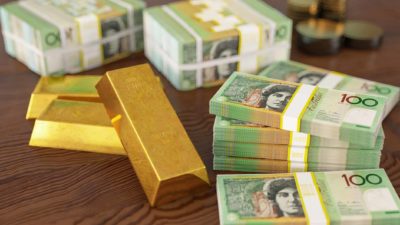Key Points
- Spot price of gold hovering around using $1,800 an ounce
- Disconnection from current market factors to gold price
- Demand for the precious metal expected to surge
The price of gold has failed to live up to investor expectations over the course of 2021. The yellow metal is traditionally seen as a safe haven when markets are in panic mode.
Yet, during COVID-19, the spot price of gold has travelled sideways to trade under US$1,850 per ounce. It was only for a brief movement in May 2021, that the gold price hit above the US$1,900 mark.
At the time of writing, the price of gold is fetching for US$1,826.48 per ounce. This means that the precious metal has lost 1.22% since this time last year.
What's weighing down the price of gold?
If history is anything to go by, gold should be gleaming to record highs today.
Rising inflation amid the lowest interest rates the world has seen, and the economic downfall from COVID-19 should be valid reasons. However, the price of gold has remained relatively steady for the past 18 months.
In today's environment, investing in gold is done without acquiring physical bullion due to delivery and storage costs.
As such, commodity futures exchange offer 'unallocated' gold to investors. This means that the precious metal remains the property of the bank, but the investor is essentially a creditor to the bank.
On the other hand, 'allocated' gold enables financial institutions like banks to place leveraged bets on the future price of these metals.
With a minuscule amount of gold products traded daily on financial exchanges, physical bullion has lost interest among investors. That has forced gold mining companies and investors to accept the futures price for their physical bullion transactions.
The large increase in trading of futures and options contracts is being blamed for holding back the price of gold.
Is a comeback on the cards?
Each year, global gold mining adds around 2,500-3,000 tonnes to the overall above-ground stock of gold. While gold production has shown an upward trend in recent years, this is likely to level off in the future.
Mine production accounts for around 75% of the total gold supply each year. However, annual demand has outpaced how much gold is being produced.
Jewellery accounts for the largest slice of global gold demand at around 50%. This is followed by central bank reserves at 25%, individuals at 15% and industrial uses at 10%.
Consumer demand led by gold jewellery has risen strongly in recent times, particularly across emerging markets. Nonetheless, recovering demand for gold jewellery could help push the price of gold higher.
In addition, new global banking rules could spark fresh interest from investors in owning bullion should inflation continue to soar.









